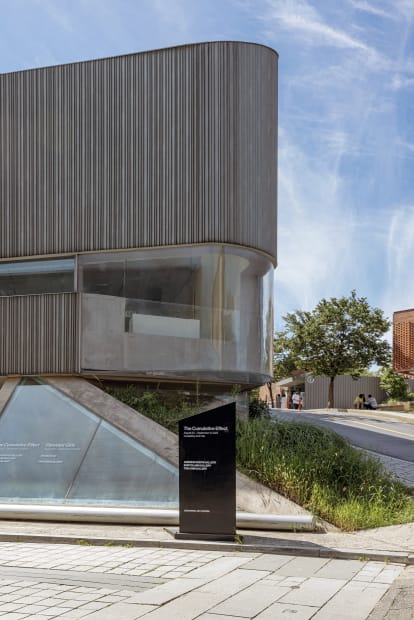Andrew Kreps, Bortolami, and Tina Kim Gallery are pleased to present The Cumulative Effect, a group show at Songwon Art Center in honor of the inaugural Frieze Seoul. The Cumulative Effect is curated by John Yau and features artists such as Pacita Abad, Ghada Amer, Davide Balliano, Daniel Buren, Oliver Lee Jackson, Suki Seokyeong Kang, Minouk Lim, Rebecca Morris, Mary Obering, Clare Rojas, Cheyney Thompson, and He Xiangyu.
Working across a wide range of materials and processes, the artists in The Cumulative Effect use pencil, watercolor, oil paint, gold leaf, spray paint, fabric, silkscreen, and collage to engage with subject matter that intersects with biography, culture, society, identity, anxiety, desire, and ruminations about time and history. There are no substitutes for Ghada Amer’s use of embroidery and gel, Mary Obering’s use of egg tempera and gold leaf, Pacita Abad’s stitching on padded canvas, or Minouk Lim’s use of wooden canes and cuttlefish bones. These multimedia artists are interested in the interface between personal and local history, the different narratives and anti-narratives of art, and the effects of being an individual under constant threat, opening up the possibilities of art for themselves and for the viewer.
The title of the exhibition, The Cumulative Effect, comes from an essay that American artist Rebecca Morris wrote (Artforum, March 1, 2013) on the paintings of the Belgian painter Raoul De Keyser (1930-2012), shortly after he died in Deinze. “Here was a career’s worth of art at play,” Morris wrote, “a way of composing and building an image that was personal yet also utterly open and generous.” The artists in The Cumulative Effect challenge many of the assumptions that are integral to old-world thinking and late 20th century theories about the avant-garde and the death of the author.
Their work is geometric, as in work by Balliano, Buren, Obering, Morris, and Rojas; they use embroidery, as in the work of Abad and Amer; and they make sculptures out of industrial and found materials, as well as things gathered from nature, like Kang and Lim. None of them, however, belongs to any school or stylistic tendency, nor does the work look like anyone else’s. How the particulars of their visual language functions in their work is, to cite Morris, “personal” and “generous,” rather than formal and art historically correct.















